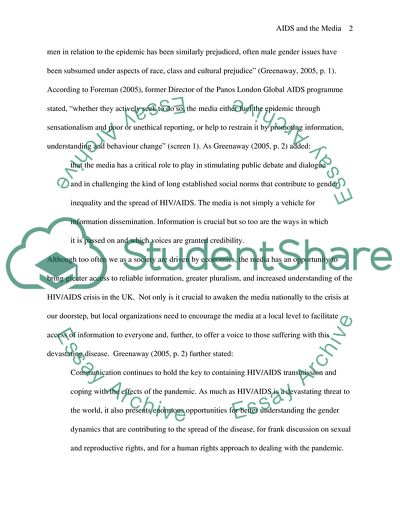Cite this document
(HIV/AIDS and the Media Today Term Paper Example | Topics and Well Written Essays - 8000 words - 2, n.d.)
HIV/AIDS and the Media Today Term Paper Example | Topics and Well Written Essays - 8000 words - 2. Retrieved from https://studentshare.org/media/1703636-representations-of-hiv-and-aids-in-the-media
HIV/AIDS and the Media Today Term Paper Example | Topics and Well Written Essays - 8000 words - 2. Retrieved from https://studentshare.org/media/1703636-representations-of-hiv-and-aids-in-the-media
(HIV/AIDS and the Media Today Term Paper Example | Topics and Well Written Essays - 8000 Words - 2)
HIV/AIDS and the Media Today Term Paper Example | Topics and Well Written Essays - 8000 Words - 2. https://studentshare.org/media/1703636-representations-of-hiv-and-aids-in-the-media.
HIV/AIDS and the Media Today Term Paper Example | Topics and Well Written Essays - 8000 Words - 2. https://studentshare.org/media/1703636-representations-of-hiv-and-aids-in-the-media.
“HIV/AIDS and the Media Today Term Paper Example | Topics and Well Written Essays - 8000 Words - 2”, n.d. https://studentshare.org/media/1703636-representations-of-hiv-and-aids-in-the-media.


